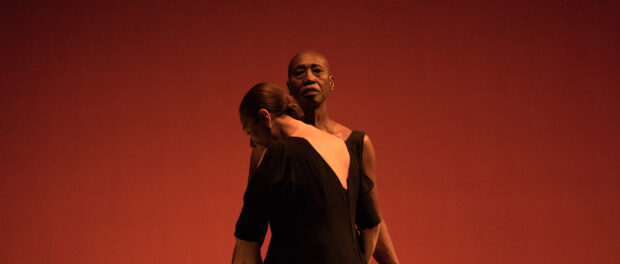Danse Danse launches its 25th season with Pina Bausch’s legendary Rite of Spring
Dancers from fourteen different African countries bring the brutality and vitality of Stravinsky's iconic score to life.
Danse Danse launched its 25th season this week with a revival of the late great Pina Bausch’s Rite of Spring. Originally created in 1975 for her world-renowned Tanztheater Wuppertal, Bausch’s choreography captures both the brutality and the vitality of Stravinsky’s original vision: the sacrifice of a young virgin required by a remote pagan community to ensure the arrival of spring and its procreative forces.
For this revival, the Pina Bausch Foundation partnered with the Senegalese dance school École des Sables as well as Sadler’s Wells in the UK, to bring together 32 dancers from 14 different African countries.
The costumes, choreography, and set design, which features a thick layer of soil spread out over the stage, were true to the original.
The work opens with a young woman lying on a red dress on the earth, slowly waking up. One by one and two by two, the other female dancers appear, some running, some walking, bending to the earth, growing out of it. A nascent sexuality transforms into more explicit movements as the women become aware of the power of the red dress (clearly a symbol of menstrual blood). Stravinsky’s iconic syncopated rhythms accompany a collective awakening. In due time the men enter.
As the red dress makes its rounds among the women—each woman holding it in their hands with an attitude somewhere between shame and horror—the men dance in unison. Eventually couples are formed, and the rituals of spring continue, culminating in the choosing of the sacrificial victim, who dons the red dress and then dances herself to death.
Although some of the movements are quasi-balletic, this is clearly a far cry from the sentimental love stories of classical ballet. The Chosen One, one breast exposed, alternately convulses and freezes, desperately trying to escape but knowing there is no way out. She attempts to defy her fate again and again but ultimately succumbs.
The work is a powerful portrayal of the primal forces of nature that control us from within and from without. In its original conception, in 1913, Stravinsky and his collaborators, including the work’s first choreographer Vaslav Nijinsky, set the work in the far north deep in the Russian winter, bringing to its Parisian audience a portrayal of primitive, pagan ritual that was so disturbing the haute monde rioted and the work had to be halted after eight minutes. I was slightly perplexed that this was the work chosen for the partnership between the Pina Bausch Foundation and the École des Sables. In the early 20th century, Africa was one of the main loci of European primitivist tropes and fantasies. Perhaps we’ve moved beyond the stereotypes, but I couldn’t help but wonder if this production was an attempt at reclamation, or perhaps a retelling of the inherent sexual violence of Rite, this time featuring the colonial rape of Africa. And perhaps that is what explains the expressions on the dancers as they took their well-deserved bows: no smiles, just sheer, painful exhaustion with a hint of defiance.
Although the Rite of Spring may have been the main draw of the evening, common ground[s}, the opening duet between Malou Airaudo, Bausch’s original sacrificial virgin in the 1975 Rite, and Germaine Acogny, the founder, with her husband Helmut Vogt, of l’Ecole des Sables and premiere lady of African dance, was in some ways more moving.
Evocative of evening, of nature, of time slowly passing, the choreography sometimes featured a long stick the two women used together to imitate rowing. The relationship between the women wasn’t clear: were they lovers? Mother and daughter? Sisters? Best friends? It didn’t really matter—there was an abiding sense of caring and patience that pervaded the work. At times the women seemed to wash each other. They often gently embraced. But there were also moments when they were separated on the stage, each doing their own thing. The movements of Airaudo sometimes brought to mind those of the Chosen One in the Rite, but now softened, quieter, without fear, somehow stronger. Part-way through the work, the two women spoke about Pina Bausch, Airaudo in English, Acogny in French. Given that the two dancers are older now than Bausch was when she died, the reminiscences were particularly poignant.
Whereas the Rite speaks of riotous chthonic forces beyond our control—youth, sex, nature, creation—common ground[s] speaks of the quiet passage of time and the types of love that transcend difference and endure and persist after the wild dance of youth is over. It portrays an in-between world of waiting and caring, of the quiet strength of women to carry on through autumn after the rites of spring have had their way.
At Théâtre Maisonneuve October 5, 6, 7, 8 at 8pm.






